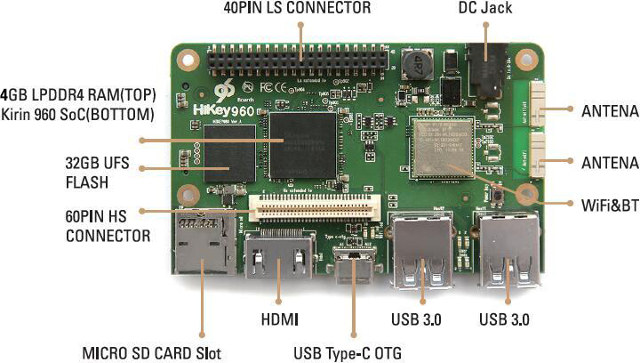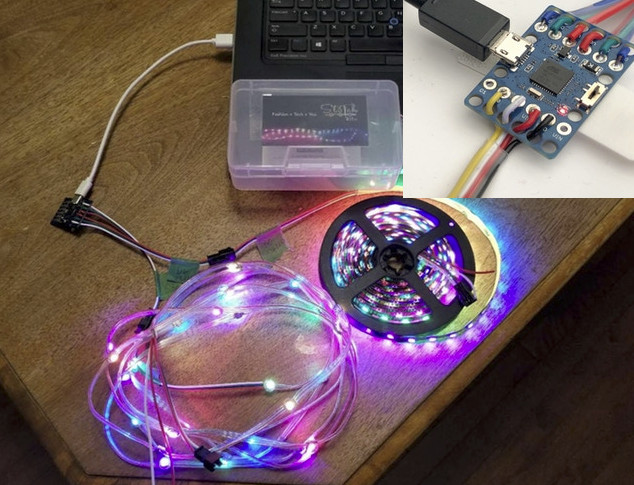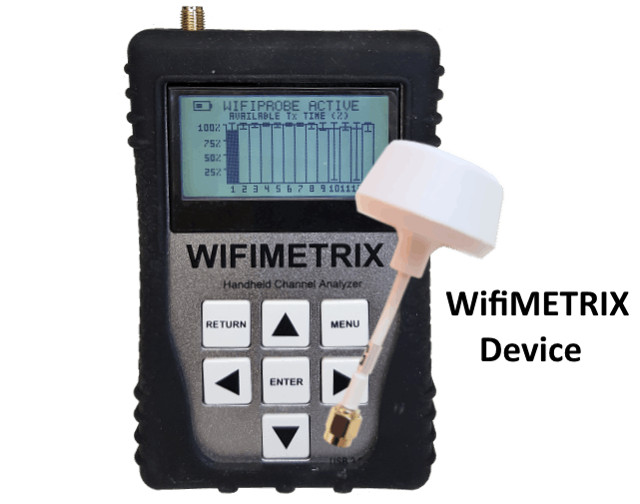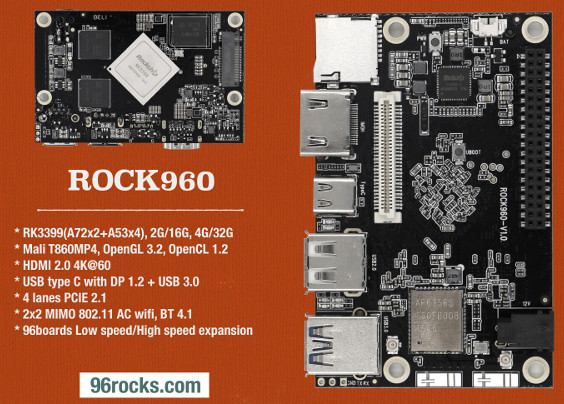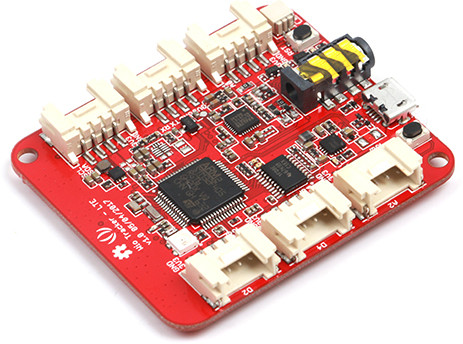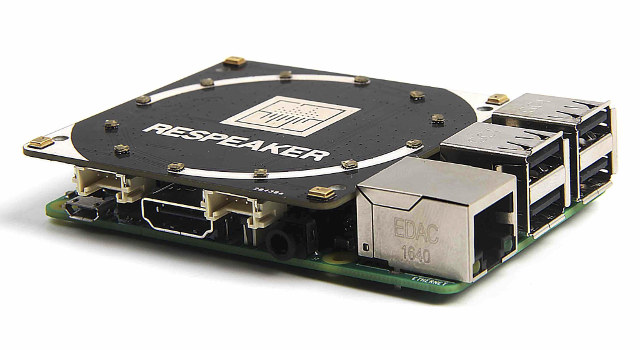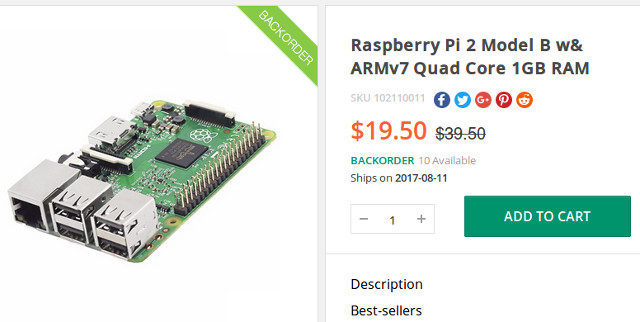Hikey 960 development board is one of the most powerful Arm boards on the market thanks to Huawei/Hisilicon Kirin 960 octa-core processor with four ARM Cortex A73 cores, four Cortex A53 cores, and a Mali-G71 MP8 GPU, fast storage with 32GB UFS 2.1 flash, and 3GB LPDDR3 memory. Like the earlier Hikey (620) board, the board is also an official reference board for AOSP, so you should be able to run the latest Android version, and also play with sensors using Neonkey SensorHub 96Boards mezzanine board. If you are somehow limited by the 3GB RAM on the board, you can rejoice as Seeed Studio has just launched a 4GB RAM version selling for $249, or about $10 extra. Note that shipping is only scheduled for February 2, 2018, so those are pre-orders. The rest of the specifications for Hikey 960 4GB RAM version are unchanged: SoC – Huawei Kirin 960 […]
Arduino & Grove Compatible StitchKit Mixes Fashion & Technology (Crowdfunding)
I don’t really get fashion. For example, I don’t understand why somebody would spend $100 on a pair of “Jean-Patrick Coultier” trousers, while you could get pretty much the same for about $20. My clothes just need to keep me warm and comfortable. And now I can see people starting to attach blinking lights to their clothes. Heresy!!! But others have a different opinions, and people interested in fashion, may not be interested in electronics, but still want those shiny things on their clothes. StitchKit is an Arduino compatible board that can also take Seeed Studio Grove module designed for those kids, teachers, designers, and cosplayers who want to easily add LEDs and other electronics to clothes or other wearable pieces without having to dig into the technical details. The system works around MakeFashion board powered by an Arduino compatible Microchip / Atmel ATMega32U4 AVR micro-controller with two rows of […]
International Black Friday & Cyber Monday Deals in 2017
Black Friday and Cyber Monday 2017 deals have started to show up on some Chinese e-retailers website, so as every year, I’ll go through a non-exhaustive list with the most popular websites. GearBest’s 2017 Black Friday event offers discount from 8% up to 15% for mobile phone, tablets & computers, and appliances. One example if Alfawise S95 TV Box with S905W/2GB RAM/16GB flash going for $29.99 shipped. They also offer coupons up to 20% or a just amount in dollars. You can purchase lucky bags with a surprise product, some flash sales will be organized, as well as a lucky draw to win Xiaomi Mi 6 smartphone. Aliexpress is ready for both Black Friday and Cyber Monday with some games to win coupons, and deals per category. I have not found any specific yet, but while the games are on, the actual Black Friday sale will only take place between […]
WifiMETRIX Wi-Fi Networks Analyzer Supports Packet Injection, Throughput Analysis
Nuts about Nets (that’s the company name…) WifiMETRIX is a dual band WiFi diagnostic tool used to analyze, monitor and troubleshoot Wi-Fi networks. The handheld device implements two main features: AirHORN RF signal / channel generator that transmits RF signals for each of the Wi-Fi channels, and aids in testing Wi-Fi antennas, RF shields and wireless networks. WiFiPROBE for per channel’s throughput analysis The device operates in standalone mode and does not need to associate with the access point to perform the functions. WifiMETRIX technical specifications: Dual-band 802.11 Wi-Fi chip Antennas / connectors Dual-band antenna for 2.4 and 5.x GHz ISM bands Standard 50 ohm SMA antenna connector 50 ohm SMA terminator to protect antenna connection SMA terminator (dummy load) also used for calibrating the device Functions AirHORN channel / signal generator functionality (packet injection) WifiPROBE channel analyzer functionality Display – 128×64 built-in LCD screen USB – 1x micro USB […]
Rock960 Board is a 96Boards Compliant Board Powered by Rockchip RK3399 SoC
So it looks like Rockchip is soon going to join 96Boards family with Rock960 board. Developed by a Guangzhou based startup called Varms, the board will be powered by Rockchip RK3399 hexa-core SoC, and comply with 96Boards CE specifications. Rock960 board preliminary specifications: SoC – Rochchip RK3399 hexa-core big.LITTLE processor with two ARM Cortex A72 cores up to 1.8/2.0 GHz, four Cortex A53 cores @ 1.4 GHz, and ARM Mali-T860 MP4 GPU with OpenGL ES 1.1 to 3.2 support, OpenVG1.1, OpenCL 1.2 and DX 11 support System Memory – 2 or 4GB RAM Storage – 16 or 32GB eMMC flash + micro SD card Video Output – 1x HDMI 2.0 up to 4K@60 Hz with CEC and HDCP Connectivity – WiFi 802.11ac 2×2 MIMO up to 867 Mbps, and Bluetooth 4.1 LE (AP6356S module) with two on-board antennas, two u.FL antenna connectors USB – 1x USB 2.0 host port, 1x […]
Wio LTE GPS Tracker Board Comes with a 4G Modem, Supports Espruino Firmware (JavaScript Programming)
Seeed Studio launched Wio GPS tracker with a 2G GSM module a few months ago, and while it should work in some countries, others are phasing out 2G networks, and only support 3G or 4G. The company has now launched an update with Wio LTE board with the same form factor, and most of the same features except they replaced the 2G/Bluetooth/GNSS module with a 4G LTE/GNSS module, and Atmel SAMD21 ARM Cortex M0+ microcontroller by an STMicro STM32 ARM Cortex-M4F MCU. Wio LTE board specifications: MCU – STMicro STM32F405RG ARM Cortex M4F MCU @ 168 MHz with 1MB flash, 192+4KB SRAM Storage – micro SD slot Connectivity via Quectel EC21-A (America) module LTE Cat.1 modem: FDD LTE: B2/B4/B12 WCDMA: B2/B4/B5 AT Command: 3GPP TS27.007 and enhanced AT Commands Data – LTE-FDD Max 10Mbps(DL) Max 5Mbps (UL) NanoSIM card 2x u.FL antenna connectors GNSS – GPS/BeiDou/GLONASS/Galileo/QZSS with 1x u.FL GNSS […]
ReSpeaker 4-Mic Array is $25 Quad Microphone Add-on Board for Raspberry Pi
Last year, Seeed Studio launched ReSpeaker WiFi Audio / IoT board based on Mediatek MT7688, as well as an optional microphone array board with 7 microphones and 12 LEDs. Later on, they introduced a $10 2-mic array board for Raspberry Pi Zero (W), and today the company has started to take orders for ReSpeaker 4-Mic Array for Raspberry Pi board for $24.50 plus shipping. Respeaker 4-Mic Array board specifications: Audio X-Powers AC108 quad-channel ADC with I2S/TDM output transition 4 Microphones Expansion 2x Grove interfaces (1x I2C, 1x GPIO port using pins 12 & 13) 40-pin Raspberry Pi compatible header Misc – 12 LEDs (APA102) connected over SPI, GPIO5 enables power Dimensions – 65mm x 65mm x 9mm Weight – ~20 grams The board will give Raspberry Pi board the ability to do Voice Activity Detection (VAD) aka “hot word” detection, estimate Direction of Arrival (DoA) and show the direction via the LED ring, just like Amazon Echo or Google Home. I’m using an Orange Pi Zero board with a single microphone with Google Assistant and while it works fine most of the […]
Buy Raspberry Pi 2 Board for Just $19.50 (Promo)
With the launch of Raspberry Pi 3 last year, there has been much less interest in the Raspberry Pi 2 board, especially since there has not been any official price cut. But Seeed Studio has an interesting promotion right now where the company sells the Raspberry Pi 2 board for just $19.50, or $20 off the normal price on their website. That price does not include shipping, but this can apparently be combined with TENOFFSHIP coupon to bring the total price with shipping to Germany to $21.66. If the same laws are still in place, it’s below the 22 Euros limit in Europe, meaning you won’t need to pay for VAT or customs duties on the board. You need to use the coupon before July 31, midnight (GMT+8), so there are only a few hours left. The main downside is that only 10 are available on backorder with shipping scheduled […]


